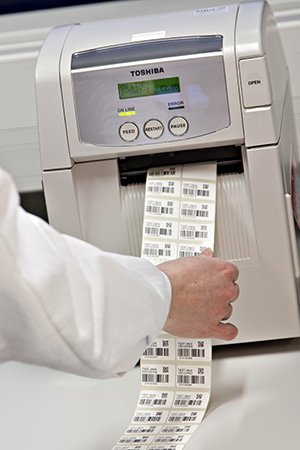General information
The following description contains basic information about the transport and processing of biobank samples. The Blood Service is responsible for transporting the samples from hospitals to the Blood Service for processing and then to FIMM. The samples are transported and processed in accordance with the guidelines and quality system of the Blood Service.
Transporting samples from hospitals to the Blood Service
The samples and referrals are packed for refrigerated transport (between +2°C and +14°C) in the hospitals according to guidelines issued by the Blood Service. The samples are transported to the Blood Service within 8 hours of sample collection.
Address:
Finnish Red Cross Blood Service
Reception of samples
FHRB Biobank
Härkälenkki 13 C
01730 Vantaa
Samples
The Pt-Hembio test battery includes the following subtests: B-Hembio (blood samples), Bm-Hembio (bone marrow sample) and Ts-Hembio (skin biopsy specimen). The skin biopsy specimen (Ts-Hembio) is taken only at the time of diagnosis. Only the full test battery may be ordered. Test results are not disclosed, and samples are coded and processed for biobanking at the Blood Service.
Blood samples (B-Hembio):
- 9 ml serum tube
- 9 ml heparin tube
- 2 x 9 ml EDTA tube
Bone marrow sample (Bm-Hembio):
- max. 30 ml of bone marrow in 9 ml EDTA tubes (~5 ml per tube)
Skin biopsy (Ts-Hembio):
- 1 x ∅ 4 mm tissue specimens in saline solution, preservative-free tube
Sample processing
When the samples arrive, the referral and the automated message sent by the Finnish Hematology Registry are checked to ensure that the FHRB patient numbers match.
The quality of the samples is checked, and a note of any deviations from the required quality is made in the sample data. Checks include sample volume, temperature, coagulation, hemolysis, lipemia, icterus and ID data. Tubes with incomplete ID data will not be processed.
The samples are divided into batches in tubes suitable for freezing. The tubes are coded with 1D and 2D barcodes as well as a number sequence readable with the naked eye. All samples stored in the biobank are always coded.
All the information related to the biobank samples, e.g. the FHRB patient number, sample type and volume, date and time of sample collection, sample quality review information, date and time of processing, and location in the liquid nitrogen container, is entered in the LUHTI sample database maintained by FIMM at the Blood Service. All sample-specific information is transferred to the sample management system of FIMM’s biobank.
Blood samples
Blood samples are processed as soon as possible after they arrive at the Blood Service. The serum and heparin tubes and one of the EDTA tubes are centrifuged and the isolated serum and plasma divided into batches using coded tubes and then frozen in liquid nitrogen.
The other EDTA tube is coded and frozen at -20°C as whole blood in the original sample collection tube at the Blood Service. The coded sample is taken to FIMM for extraction of DNA from the EDTA whole blood sample in accordance with FIMM’s guidelines.
Bone marrow samples
Bone marrow samples are processed no later than on the day after sample collection. The samples are stored in +4°C until processed. Mononuclear cells are isolated from the samples in a sterile manner with gradient centrifugation using Ficoll.
Following isolation, the total cell count and cell viability are determined, and the data are entered in FIMM’s sample database. Depending on the number of viable cells obtained, the number of mononuclear cells to be frozen is ca. 10 million cells/ampoule. In the case of cell pellets, the amount to be frozen is ca. 15 million cells/ampoule. The frozen cell products are stored in liquid nitrogen.
Fresh cells can also be provided for studies approved by the FHRB Steering Committee and an ethics committee. If no bone marrow sample is available, mononuclear cells are isolated in a corresponding manner from the EDTA cell fraction of peripheral blood (one 9 ml tube after separation of plasma).
Skin biopsy
Skin biopsy specimens are coded and frozen at -20°C at the Blood Service. The coded samples are taken to FIMM for extraction of germline DNA in accordance with FIMM’s guidelines.
Transporting samples from the Blood Service to FIMM
All samples are coded before they are taken from the Blood Service to FIMM. The processed sample batches stored in liquid nitrogen and the frozen EDTA whole blood samples and skin biopsy specimens are sent from the Blood Service to FIMM in dry ice once per week or as needed. The contact person at FIMM is notified in advance of any departing consignments.
More information
More information about the transport and processing of biobank samples may be requested from the addresses given below. Detailed information about the transport and processing of samples is provided on request to researchers in charge of studies approved by the FHRB Steering Group.
FHRB biobank, tel. 044 434 4331
hematologinenbiopankki@veripalvelu.fi





